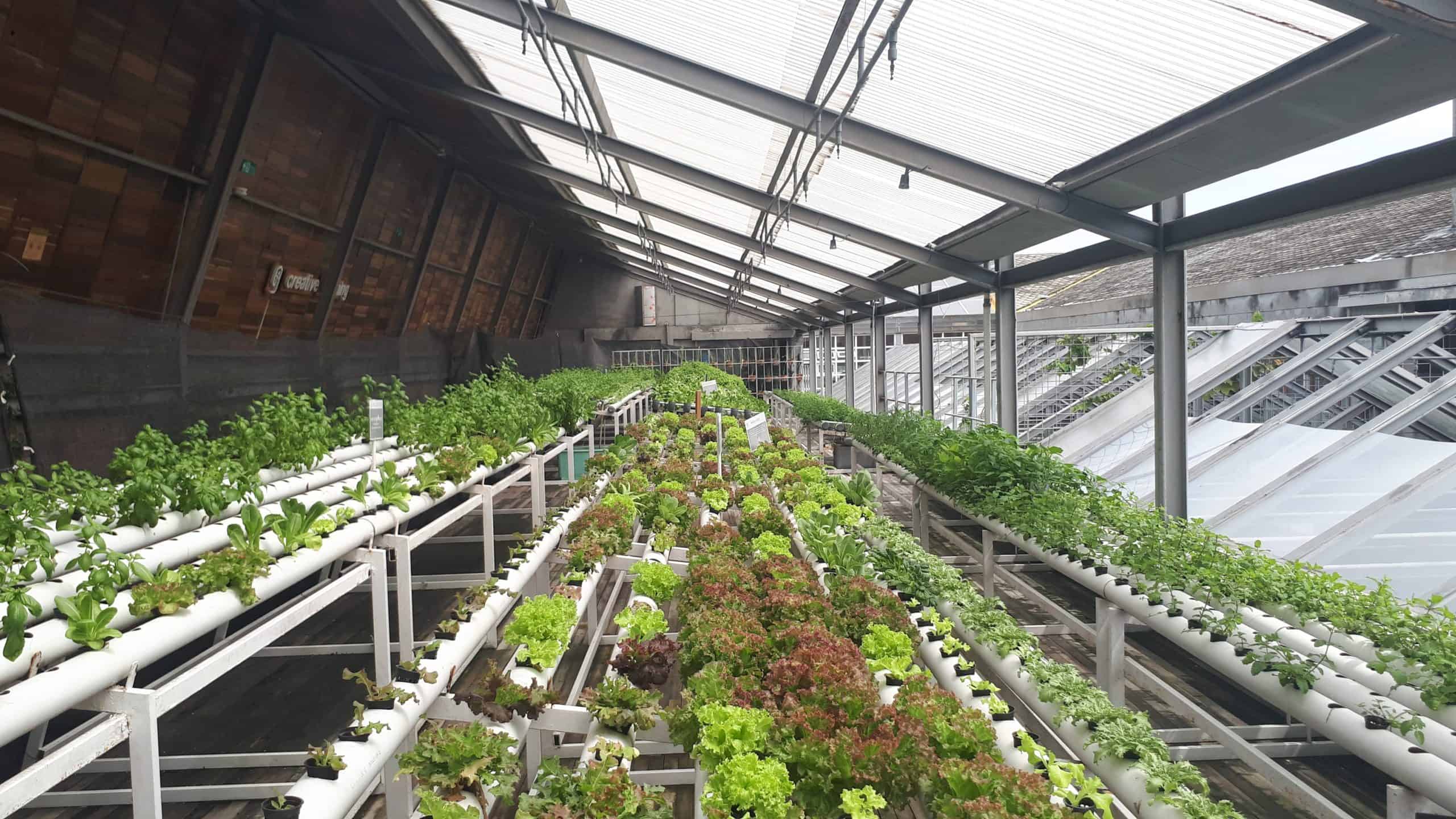I started my hydroponics journey so I could grow healthy food for my family and I. Because we want to eat the food we grow hydropnically, it is very important to make sure that our hydroponics are safe and free of toxins. So is hydroponics safe?
The truth is not all hydroponic systems are safe. Some systems are made out of plastic that is not food grade. This means you could be ingesting harmful chemicals from the plastic. In addition, some systems may involve the use of harmful chemicals for pesticides and fertilizers.
In this article, I will share some safety concerns you need to consider when setting up your own hydroponic system.
Polyvinyl Chloride (PVC)
Polyvinyl Chloride (PVC) has become a popular component of many DIY hydroponic systems because it is a commonly available, inexpensive plastic material. There is a lot of conflicting opinions about the use of PVC in hydroponics.
Many people will argue that because drinking water infrastructure uses PVC piping, it must be okay for hydroponics. It is true that many water engineers specify PVC piping for cold water drinking water systems. However, there are scientific studies that show that tap water can absorb BPA from PVC pipes. For example, a study conducted by Cheng et al. (2016) found that BPA concentrations in tap water initially increased when it made contact with PVC pipes.
Of course, it is up to you whether you want to use PVC based on the information available. In my opinion, it is okay to use certain kinds of PVC in your hydroponic system.
The most significant problem with PVC problems in hydroponics is the use of Schedule 40 (the white PVC pipes), which is the most common type of PVC. Schedule 40 PVC piping does not keep out all of the light. This leads to a higher accumulation of biofilm (bacteria) in the piping.
If your hydroponic system is in an area where there is a lot of light, I recommend using Schedule 80 PVC. It is typically gray in color and is thicker than Schedule 40 PVC.
[MOVE UP] It is true that some PVC products contain bisphenol A (BPA) which is a chemical that can cause undesirable health effects in humans. BPA is an endocrine disrupter which means it can imitate your body’s hormones and disturb the production of natural hormones.
[MOVE UP] However, not all PVC materials contain BPA. There are two forms of PVC: flexible and unplasticized. Unplasticized PVC (uPVC), also known as rigid PVC, does not contain phthalate or BPA. It is considered a safe material that can be used transport water. This is the type of PVC piping used for drinking water.
Other Food Grade Plastics
If you are nervous about using PVC, there are some other materials you should consider for your hydroponic system. It is likely that many of these products will be more expensive than PVC.
In the United States, the Food and Drug Administration (FDA) requires that plastics used for food packaging have a greater purity than the plastics used for non-food applications. A food grade plastic does not contain dyes or recycled plastics that could be harmful to humans.
In general, you should avoid using reservoirs and piping/tubing made of the following materials for your hydroponic system:
- Black Nylon
- Regen (recycled) Ultra-high-molecular-weight polyethylene (UHMWPE)
- Polystyrene
- Polycarbonate (PC)
- Acrylic
Note: The plastic listed above are not considered as food grade in the United Kingdom (UK) which has more stringent rules than the United States.
Here is a list of other food-grade plastics to consider for your hydroponic system:
- Polyethylene Terephthalate (PET)
- Polypropylene (PP)
- Virgin High-Density Polyethylene (HDPE)
- Virgin Low-Density Polyethylene (LDPE)
- Natural grade Nylon 6 & 6.6 (without additives)
PVC Glue
Many people use glue to join piping and fittings in their hydroponic systems. This glue is actually a chemical “cement.” These glues are toxic until they dry. Do not let the glue make contact with your skin, and do not inhale the fumes.
Blue PVC glue is rated for potable water and is not toxic after it dries. Just make sure you let the glue fully cure (2-3 hours) and flush water through the pipes before using it for hydroponics.
Electricity Around Water
As you may know, electricity and water can be a dangerous combination. Active hydroponic systems involve this combination, so it is important to be aware of where your power is coming from in relation to your reservoir. There tends to be a higher concentration of dissolved ions in solution, so it will conduct more electricity than regular tap water.
Here are some tips for safely working on your hydroponic system.
- Use tools with rubber handles when working near your hydroponic system.
- Keep your electrical equipment away from the water.
- Do not overload electrical outlets (this will prevent fires).
- Make sure you are using cords that are in good condition.
Microbial Contamination
It is possible for foodborne pathogens to be found on hydroponic produce especially leafy greens like lettuce.
Closed hydroponic systems are particularly susceptible to foodborne pathogens. Water and growing media can introduce foodborne pathogens to a hydroponic system. Here are some tips to prevent foodborne pathogens from entering your hydroponic system:
- Do not use water that is of poor quality.
- Sterilize your tools and hands before harvesting your crops.
- Clean your reservoir and other equipment regularly.
- Sterilize your hydroponic media before use.
Conclusion
In conclusion, hydroponic crops are just as nutritious as crops grown in soil. Like soil farmers, DIY hydroponic farmers need to take a couple of precautions when setting up their systems to ensure they are producing healthy food for themselves and their families.

